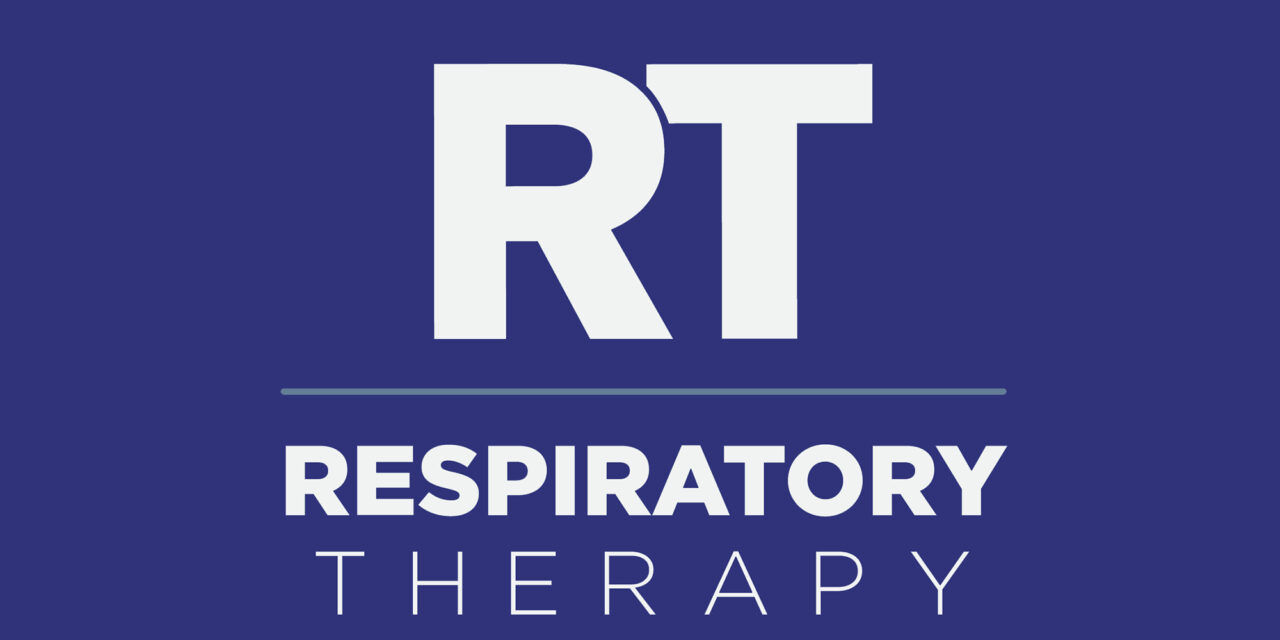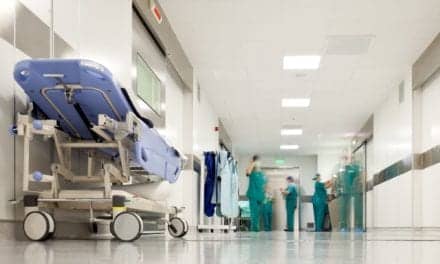Respiratory therapists share compensatory and work environment information reflecting today’s tight respiratory market in this inaugural RT magazine survey.
By Anne Welsbacher and Jeff Standridge, RRT, EdD
The high response rate for RT Magazine’s first annual salary survey underscores what most practitioners know anecdotally about the nature of today’s respiratory health care market: tight, fiercely competitive, and growing. Health practitioners in respiratory care are desperately needed, and are snapped up by hospitals trying to fill spots. “Any candidate worth his salt is working,” says John Maher, director of strategic recruiting, RCI Together Recourse Communications, a national health care recruitment organization. Respiratory care shares a high-demand arena with other hot fields such as radiology, pharmacy, and physical therapy (although the latter two are less in demand than in previous years).
But respiratory therapists do not share these professions’ compensation levels. RT conducted a survey in spring 2003, emailed to 2,753 readers, 23% of whom responded with information about their compensation, benefits, hours, and other career-related topics. RT’s survey findings mirror, or skew slightly higher than, national recruitment statistics: In late 2002, the nation’s RTs earned between $39,000 and $46,000 annually, according to Maher; the largest percentage of RT’s survey respondents reported incomes in the $40,000 to $49,000 range, with the second-highest percentage earning in the $50,000-$59,000 range.
By contrast, pharmacists earn in the high $60,000s to low $70,000s, and those who move into retail pharmacy—which 6% to 7% have done in the past 5 years—earn as much as $100,000. Nuclear medical technologists earn in the mid $40,000s, and physical therapists earn between $50,000 and $60,000 per year.
Still, respiratory therapy compensation figures are increasing. Marsha Lewis, director of respiratory care for four of five Baptist Health Facilities in Arkansas, including Baptist Health Medical Center-Little Rock, says that hospital has made three major market adjustments in the past 10 years, the most recent one taking effect in June 2003 and including an across-the-board pay increase of 5%.
RT Salary Survey: Pertinent Findings
A survey was conducted of RT readers to better understand the job market, as well as the market for compensation and benefits. The results below are summary findings of the survey.
>Demographics
- The survey was very broadly distributed, with responses being received from every state in the United States, as well as Canada.
- The survey netted approximately 642 responses out of 2,753 total surveys, resulting in a 23% response rate.
- Gender was fairly equally distributed with 52% identifying themselves as males and 46% as females. Approximately 2% did not report a gender.
- Approximately 44% (n=286) identified themselves as “hands-on” practitioners, 26% (n=169) identified themselves as administrators or directors, and almost 12% (n= 76) described themselves as educators. The remaining respondents identified themselves as researchers (n=11), consultants (n=9), and other (n=99).
- Approximately 78% of respondents work in urban settings.
- Greater than 75% of respondents had 10 or more years of experience, with the largest majority of respondents reporting more than 16 years of experience (63%).
- A very large number of the respondents work in the hospital setting (73%), on the day shift (73%).
>Compensation and Benefits
- A majority of the respondents (54%) reported earning between $40,000 and $60,000 per year, while 26% reported earning greater than $60,000 per year and approximately 20% reported earning less than $40,000 per year.
- The clear majority of respondents reported receiving well-rounded benefits plans, including:
- 401k and/or profit-sharing (62%)
- Tuition reimbursement (74%)
- Continuing education (69%)
- Health insurance (90%)
- Life insurance (81%)
- Disability insurance (69%)
- Vacation/sick time (92%)
- Major medical benefits fully paid by or costs shared with employer (67%)
- A very low number of respondents reported receiving the following:
- Malpractice/liability insurance (29%)
- Paid professional association dues (16%)
- Even during a time when many public corporations are experiencing lay-offs and/or are choosing to defer annual pay increases, RCPs reported receiving performance increases in each of the past 3 years. Only 8% failed to receive a pay increase in 2001.
- Approximately 88% of respondents reported receiving an increase of between 1% and 6% at their last pay increase.
>Job Market and Other Observations
- Despite the slump in jobs during the mid to late 1990s, the job and salary market for respiratory care practitioners seems to be somewhat positive;
- 69% of respondents reported having between one and six job openings within the department where they work. A very large number of RCPs make in excess of $40,000 per year (80%), while also receiving very well rounded and robust benefits packages.
- 73% are members of their respective professional association, eg, AARC, despite the fact that a very small portion (16%) have their professional dues reimbursed by their employer.
- Finally, an overwhelming 86% of respondents would recommend the respiratory care profession to others.
Industry Growth
Respiratory therapy will continue to be a high-demand market into the future, Maher says, noting a “glaring need” for RTs, especially in Florida, Texas, California, and New York. “The numbers of unfilled positions in these states are off the charts.”
Needs are particularly high in rural facilities, which suffer a “double-edged sword,” according to Maher, because they lack a large population base from which to draw and they are not destination locations. In such areas, signing bonuses of $3,000-$5,000, and even as high as $7,500, are common recruitment strategies. (See this issue’s facility profile for a report on one hospital’s winning—and likely more effective—strategies for recruiting and maintaining RTs.) The Baptist Hospital salary adjustments were instigated after a market survey of the region, which included Arkansas, Oklahoma, Louisiana, and Tennessee, showed that the hospital was falling behind. “You can feel when the market is moving without you,” Lewis notes.
Specialized settings, including doctors’ offices and asthma clinics, and areas within respiratory therapy, including home care, cardiopulmonary diagnostics, and, especially, sleep laboratories, are growing.
Last year, approximately half of United States hospitals lost money, and the rest showed a profit margin of 3% or smaller, Maher says. In the face of these realities, can hospitals afford to pay RTs what the free-market equation of supply and demand would suggest that they are worth?
Maher says they can’t afford not to. “Certain things are not negotiable. A facility either can be competitive in the market place, or it can leave positions unfilled and risk losing accreditation,” he says. A third option, chosen by an increasing number of hospitals currently, is to use temporary firms. But it is an expensive option, because the full-time equivalent (FTE) costs can be as much as three times those of the costs of hiring and maintaining staff internally.
“I am real concerned about our profession and the number of people coming into it,” says Lewis. “Hospital directors have got to figure out a way to help educators recruit students. More people are more critically ill all the time; we need higher-level trained people in our profession.”
There is “a lot of buzz out there” about credentials, Lewis notes, and she believes that increasing their levels is vital to the future health of both the profession and its practitioners. Her hospital moved away from a salary structure based on work areas (eg, critical care)—as it had done for 35 years—to a basis of CRT and RRT credential structure. “This adjustment has been a major change for us,” she says, adding that hospitals increasingly are turning to this structure. The hospital also has added a 12% difference between CRTs’ and RRTs’ starting salaries, with career ladder potentials of 3% for CRTs or 5% for RRTs above base salary. “I meant for this to be a substantial difference,” says Lewis. “I want to encourage people to get the RRT. I don’t discount the skills of CRTs, but I think we need the higher credentials to further the profession, and I want to do my part to achieve this.”
Specialty credentials are going to be increasingly important in the future. Currently, for example, Lewis says she does not require a practitioner to have an RPFT to work in the bronchoscopy laboratory and diagnostics section, “but if they do, they earn an additional 5%.” Maher, too, says the ability to add respiratory protocols to their resumes makes practitioners more valuable candidates.
RT’s survey yielded responses from readers in every state in the United States, plus Canada, with a roughly even gender distribution. Most of RT’s respondents are hands-on practitioners or directors, but more than one tenth are educators. Raises were common over the past 3 years, as were the existence of job openings in RT departments. Respondents have a lot of experience under their belts—most more than 16 years’ worth—another significant statistic. Lewis, who has logged more than 25 years, as have each of her two managers, says, “We will all disappear about the same time. I never thought I would be thinking about this, wondering who is going to replace me.”
One final statistic, before turning you over to the particular response data, also mirrors anecdotal truth: 86% of the survey’s respondents would recommend this profession to others.
| The Survey Was Based on These Questions Percentage rounding and multiple or “other” selection options affect totals under or above 100%.
|
RT
Anne Welsbacher is the former editor of RT. Jeff Standridge, RRT, EdD, is a former member of RT’s editorial advisory board, an adjunct assistant professor at the University of Arkansas for Medical Sciences, and an organizational effectiveness leader with Acxiom Corp.










